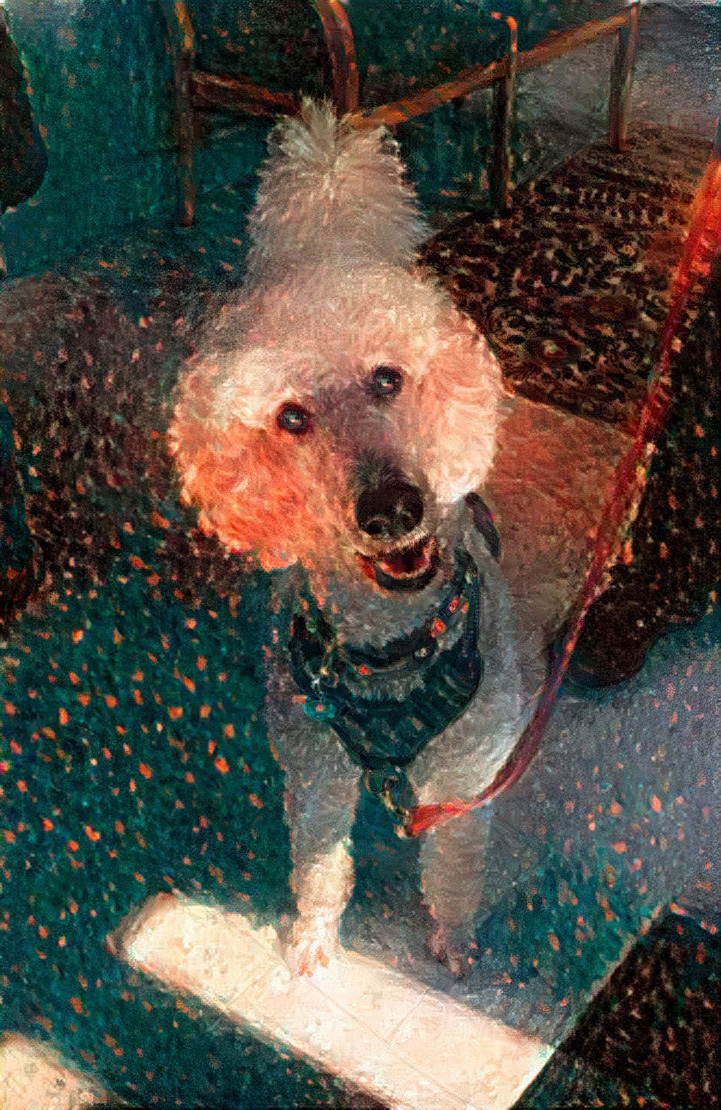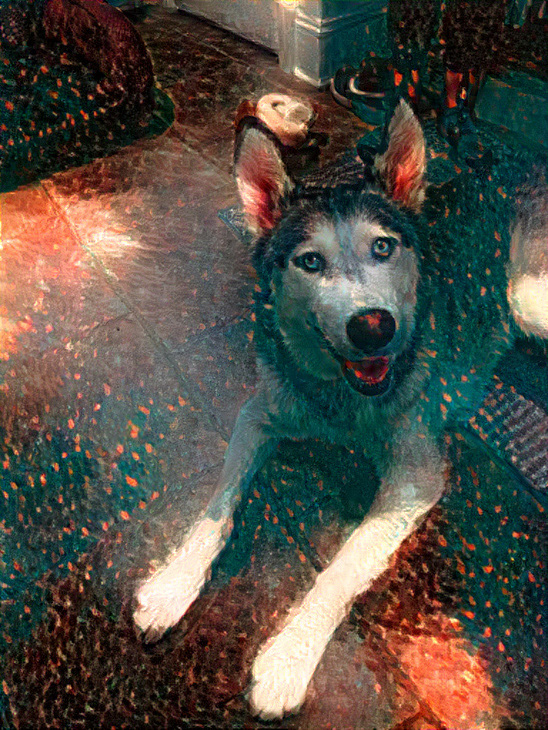Dogs have evolved alongside humans for thousands of years. We’ve bred them to work for us: herding, hunting, guarding, policing, sniffing out drugs and disease, working in search and rescue, and serving people with physical or mental health conditions. However, most dogs in the United States are companions and treated like family members.
Some dogs are more skilled than others at living amongst us, depending on their trainability or ability to “go with the flow” of human life. We humans love dogs who share our interests, whether it’s playing with balls, going for hikes, eating good food or enjoying chill time in front of the TV. However, our pets can experience fear, anxiety, depression and more when we set unrealistic expectations and/or don’t recognize that our dogs are unique sentient beings with individual needs.
Taking care of a dog is a long-term commitment. Most dogs have a life expectancy of 10-13 years, with smaller dogs often living into the mid-teens or later. So, there’s a lot to cover in keeping a pup healthy and happy.
Pawz to ponder and prepare
Before bringing a new dog into your home, ask yourself if you have time in your life to care for a canine. Do your research and discuss the pros and cons of your potential new pet with certified trainers or behavior consultants, veterinarians, rescue groups and groomers. If you choose to buy a puppy from a breeder, find one within driving distance so you can meet them and select your new pup in person. Please do not buy a puppy from a pet store or a faraway source that offers an abundance of puppies in all shapes and colors – they’re likely from puppy mills.
Rescuing a dog is wonderful. If you choose this path, take your time to make connections with well-organized groups that will help you find the right pet for you and your lifestyle.
Build a happy life for your dog
Having a happy dog means routinely engaging with your dog in a positive manner and providing them with entertainment when you can’t.
Daily outdoor time
Daily doses of outdoor time with your dog are really important – it’s a great bond-building activity and a chance for dogs to use their amazing noses to sniff and snuffle around, smell the breeze and see some sights.
Lynnie Lewis, a longtime multi-dog-and-cat caretaker in Katonah says that each pet has its own personality, and it’s our responsibility to understand their needs regarding nutrition, life at home, health, exercise and safety. When it comes to outdoor time, she creates separate routines that match each dog.
“I take all my dogs out in their fenced yard to sniff, romp and explore together before I take each one for their own walk,” she explains. “Tutu, my youngest and anxious wire-haired Dachshund, and I do short outings as many days as possible. I try to explore quiet places and see other dogs she enjoys, building her confidence.”
“My large dog, Lego, is a high-energy, sensitive dog who thrives on stimulation, such as chasing a ball, going out for walks and training,” she continues. “I do these things for short periods of time each day. And both my vet and my dog trainer taught me that Lego should take me on a walk so he can sniff and lead the way while on his leash. It’s mentally stimulating for him and helps him gain confidence and relax.”
When safe, allow your dog to set the pace and direction. If you’re struggling to walk your dog well, a trainer can help you with loose leash walking skills. Overly excited or nervous dogs will decompress when walking near or in the woods and away from vehicles.
Enrichment
Enrichment for all ages is important. The possibilities are endless from shredding boxes, digging, swimming, playing fetch or tug to sitting on a bench and watching the world go by. Offer meals on lick mats, snuffle mats and Kongs.
You can also give your dog nose or scent work – an indoor or outdoor activity that encourages foraging, sniffing out and detecting smells. Visit the American Kennel Club’s website to learn how to get started.
Gentle leadership and reassurance
The best way to help a nervous dog is to be gentle and offer lots of reassurance. Never force your dog into situations that make them uncomfortable.
“When he was 10 years old, Asher, a chocolate Labrador/Chesapeake mix rescued from South Carolina, came into our lives,” says Julianne Giardina of South Salem. “He had a difficult heartworm case and was full of fears and anxieties. He had to adjust to another pet and our loud family of five. We worked hard to gain his trust, using several anti-anxiety methods advised by our vet, such as medications, lick mats, calming anti-anxiety bedding and a ‘thunder-vest’ for bad weather and storms. Thanks to all our efforts, Asher is now thriving in a consistent and structured environment. He greets new people in a friendly manner and has been such an important loving addition to our family. We are so thankful that we found him, and he has finally found his happy place with us.”

Human companionship
Most dogs need human companionship, and leaving your dog home alone all day can cause anxiety. Allowing your dog to sleep in your bedroom at night will help create a strong bond.
Pet with consent
Did your pet pooch consent to being handled? If they come to you on their own and sit on or near you, that’s usually a clear signal that they are seeking interaction. If they are sleeping, resting or eating, do not approach them – let them have time and space, just as you would like if you were napping or eating.
If they walk away when you’re petting them, allow them to do so. If they stick around, lean in and have relaxed body language – it means they’re likely consenting to be pet.
Sleep
Most dogs need up to 16 hours of sleep a day.
Verbal cues
Calm and upbeat verbal cues will go a long way to building trust with your canine companion.
“Both of my dogs have their own theme song,” says North Salem resident Kate Hintz. “This may sound crazy, but hear me out. When I was training our male lab a few years back, I had such a hard time with recall or the ‘come’ command; he was a runner and enjoyed taking off through our yard to the neighbors’ houses instead of listening to me. I noticed that when I acted silly, he was much more willing to return than when I yelled ‘COME’ at the top of my lungs. So, I tried singing instead…and it worked! Just like using the dog’s name, when they hear ‘their’ song, they know I’m addressing them. It almost feels like a secret we share. Sometimes I’ll hum or whistle the song during more stressful situations, like cutting their nails, to reassure them. So, now I urge people to pick one of their favorite songs, insert their dog’s name, and see what happens.”
Stern reprimands and constant corrections can break down the relationship between humans and canines. It sets your dog up to be tense and avoid you, and it can even lead to irritability and aggression.
Dogs resent physical manipulation so avoid physically nudging or pushing them around. Also, avoid choking them with chains or prong collars.
Embrace the power of positivity
A trusting relationship with our dog is the most powerful training tool we have. The ASPCA and the American Veterinary Society of Animal Behavior (AVSAB) promote positive reinforcement training, giving dogs choices and avoiding confrontational training methods.
North Salem breeder Greg Burke has raised Golden Retrievers since 1982 and advises families to use praise and patience with their pets.
“A well-behaved dog comes from treating them with respect and care,” says Burke. “Praise is a very important factor to reinforce the outcomes you are striving for. Treating a dog with respect will encourage the dog to want to please you. Most dogs are the happiest when you are happy with them. Patience is also an important part of creating a well-behaved canine family member. It takes years to bring up a child correctly, so don’t have unrealistic goals when bringing up your puppy.”
“Try to be aware of the efforts your dog uses to communicate with you,” he continues. “The tone of his bark, the noise of his whine or the movement of his body is an effort to talk to you and communicate his needs or wants. Successfully training your dog is a two-way street – being a dictator does not produce a happy and well-behaved dog.”
Counselor, author and trainer Lisa Edwards, CDBC, CPDT, KA of Three Dogs Training, who has been helping families and dogs in Westchester County and New York City for over 30 years, says that dogs, like humans, learn better when they are happy to partake in the lesson. A trusting relationship with our dog is the most powerful training tool we have.
“We foster the human-animal bond when we use joyful, fear-free methods to teach,” she explains. “Inviting our dogs to partake in the training process with the promise of rewards, instead of forcing them with the threat of punishment, builds our dog’s trust in us and strengthens our relationship with our dog.”

Helping each other
A happy dog can help humans have a good outlook on life, but for that to happen, we must accept and nurture our pet dog’s unique personality and needs.
“One thing I really admire about our dogs is that they are always up for ‘it’– no matter what ‘it’ is,” says Hintz. “Whether it’s a walk to the mailbox or a hike on a local trail – our family’s dogs are always eager and willing to participate. It’s a trait I wish I had, especially on those days I’d rather spend on the couch. Keeping them engaged and excited about these spontaneous activities helps motivate me, and it’s just another example of how dogs support our mental health.”
Understanding your dog’s needs and treating them with respect will result in a happy dog and happy humans.
Learn how to “read dog”
A happy dog will:
Appear to “smile” with a soft and open mouth (this isn’t the case for all dogs).
Bark in a happy and excited tone.
Have a good appetite.
Have a loose wiggly body and tail (swishing like an “s” when trotting).
Have a soft gaze.
Have floppy or upright ears.
Initiate play by pouncing from side to side, or giving a play bow.
Play with toys.
Seek interaction with their people.
Settle, sleep and relax easily.
Signs of unease or pain include:
Air snapping.
Avoiding eye contact.
Being hypervigilant.
Constantly scanning.
Cowering.
Crouched stance.
Curled up and immobile (shut down).
Ears flat or back.
Flinching.
Furrowed brow.
Growling.
Head low.
High-pitched barking.
Licking lips.
Looking away.
Low stance.
Panting.
Pacing.
Poor appetite.
Retreating when being called or leashed up.
Snarling.
Whining.
Yawning (unless tired).
Cautious canines can:
Be scared of fireworks or loud noises.
Fear new people or other dogs.
Have worries about storms.
Look scared or act scary.
This article was published in the May/June 2023 print edition of Katonah Connect.

Dr. Sarah J. Cutler
Sarah J. Cutler is a veterinarian with a special interest in behavioral medicine. Upon graduation, she took an oath to “first do no harm,” which is a guiding principle in her practice. Sarah combines her scientific background with her respect for cats and dogs to help humans live in health and harmony with their pets. “I’m passionate about following safe practices for our pets and understanding where to find trusted professional resources,” she says.










